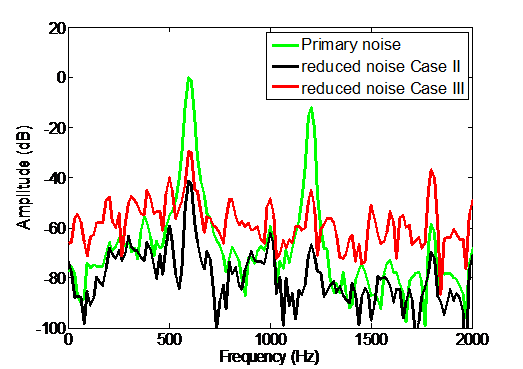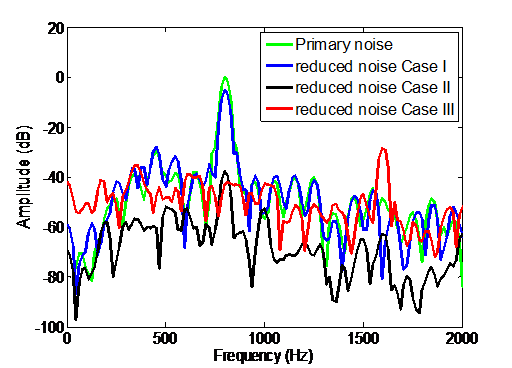Active Noise Control (ANC) is greatly superior in size and cost, compared with Passive Noise Control. For the reason, it has been widely applied in the field of noise reduction. In feedforward ANC of the duct, the sound emitted by the secondary source not only cancels noise in the downstream duct, but also radiates upstream to the reference microphone, and then confuses the reference signal. This is known as acoustic feedback. It will reduce the performance of noise control, and result in systems diverging even more.
Therefore, it is significant to solve the problem of acoustic feedback. Generic methods to suppress the acoustic feedback include the acoustic feedback neural networks, the location optimization of reference microphone, and the directivity of secondary source.
In order to solve the problem that the acoustic feedback cause the raise of the complexity of the system and computation of algorithms in active noise control of ducts, the parametric array loudspeakers (PAL) are introduced as the secondary source by researchers from the Institute of Acoustics, Chinese Academy of Sciences.
The high directivity sound beam helps PAL reduce the acoustic feedback. In order to verify the method, active noise control experiments of PAL using as a secondary source in L-shaped ducts have been completed for single frequency noise and bifrequency noise.
Real-time experiments are carried out in order to make a comparison of the amount of noise reduction achieved by the three cases, as seen in Tab. 1. The second column of Tab. 1 indicates that the secondary source is either coil loudspeaker (CL) or PAL; the third column point out the algorithms used in the three different cases. The results of ANC experiments are presented in Fig.1 and Fig.2.
Tab. 1 Cases of real-time experiments (Table by WU).
|
Case |
Secondary source |
Algorithm |
|
I |
CL |
FxLMS without neural network |
|
II |
CL |
FxLMS with neural network |
|
III |
PAL |
FxLMS without neural network |

Fig 1 Frequency spectra of single frequency noise and residual noise at error microphone position of three cases (Image by WU).

Fig. 2 Frequency spectra of bifrequency noise and residual noise at error microphone position of case II and case III (Image by WU).
It was demonstrated that a PAL enables the secondary source high directivity and reduces the acoustic feedback. At the same time, the PAL can be employed as a secondary source for ANC systems and makes significant noise reduction amounts for single frequency and bifrequency noise without using neural network. It is important that the PAL used as the secondary source decreases the amount of computation resource. Finally, the reduction regions and areas of the PAL can cover the entire duct downstream from error microphone by the validation experiment.
References:
WU Shuaibing, WU Ming, YANG Jun. An Investigation of Parametric Array Loudspeakers for Active Noise Control in a L-shaped Duct. Proceedings of the 21st International Congress on Sound and Vibration, ISSN2329-3675/ISBN 978-83-62652-66-2, International Institute of Acoustics and Vibration (IIAV), R03-923, 2014.
Contact:
YANG Jun
Key Laboratory of Noise and Vibration Research, Institute of Acoustics, Chinese Academy of Sciences, Beijing 100190, China
E-mail: junyang.ioa@gmail.com


